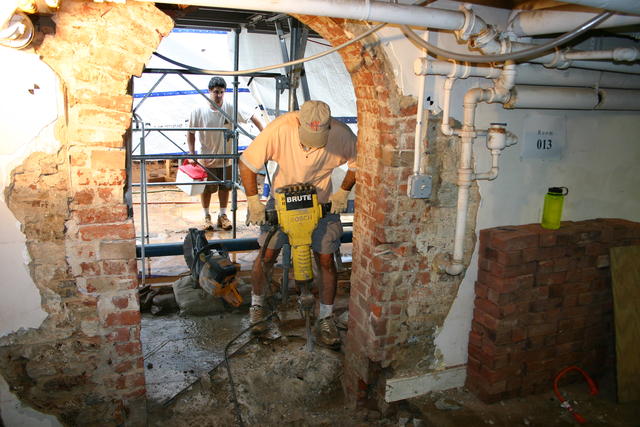
To remove the concrete floor from the ca. 1797 cellar, the slab was first cut into smaller, more manageable pieces with a concrete saw and jackhammer. Once the concrete was removed the archaeologists divided the spaces into a grid and then systematically excavated each of the grid’s squares. As they carefully scraped and troweled away each layer of dirt, they screened the soil to recover any artifacts. While they were excavating the archaeologists also looked carefully for any changes in the color of the soils they were excavating. Changes in soil colors and soil stratigraphies are usually indicative of some sort of human activity. These activities can include post holes, trenches for pipes, or any other activity that involves removing soil from the ground. Looking for these often subtle changes in soil colors turned out to be incredibly important and all of the archaeologists' work would prove to be vital for the restoration of the floors in Montpelier’s cellars.

©The Montpelier Foundation
|
|
A workman uses a jackhammer to remove the ca. 1901 concrete floor. |






